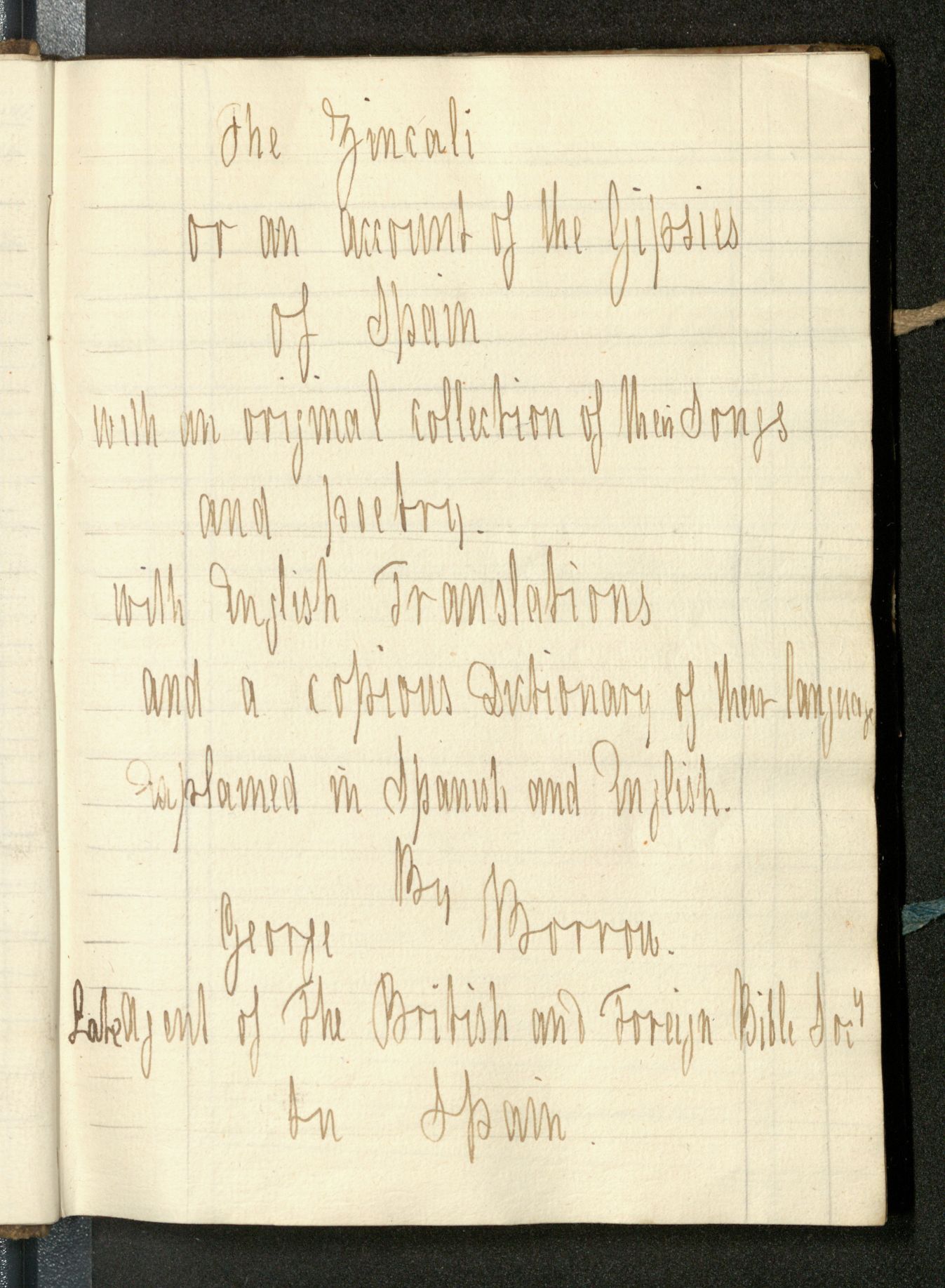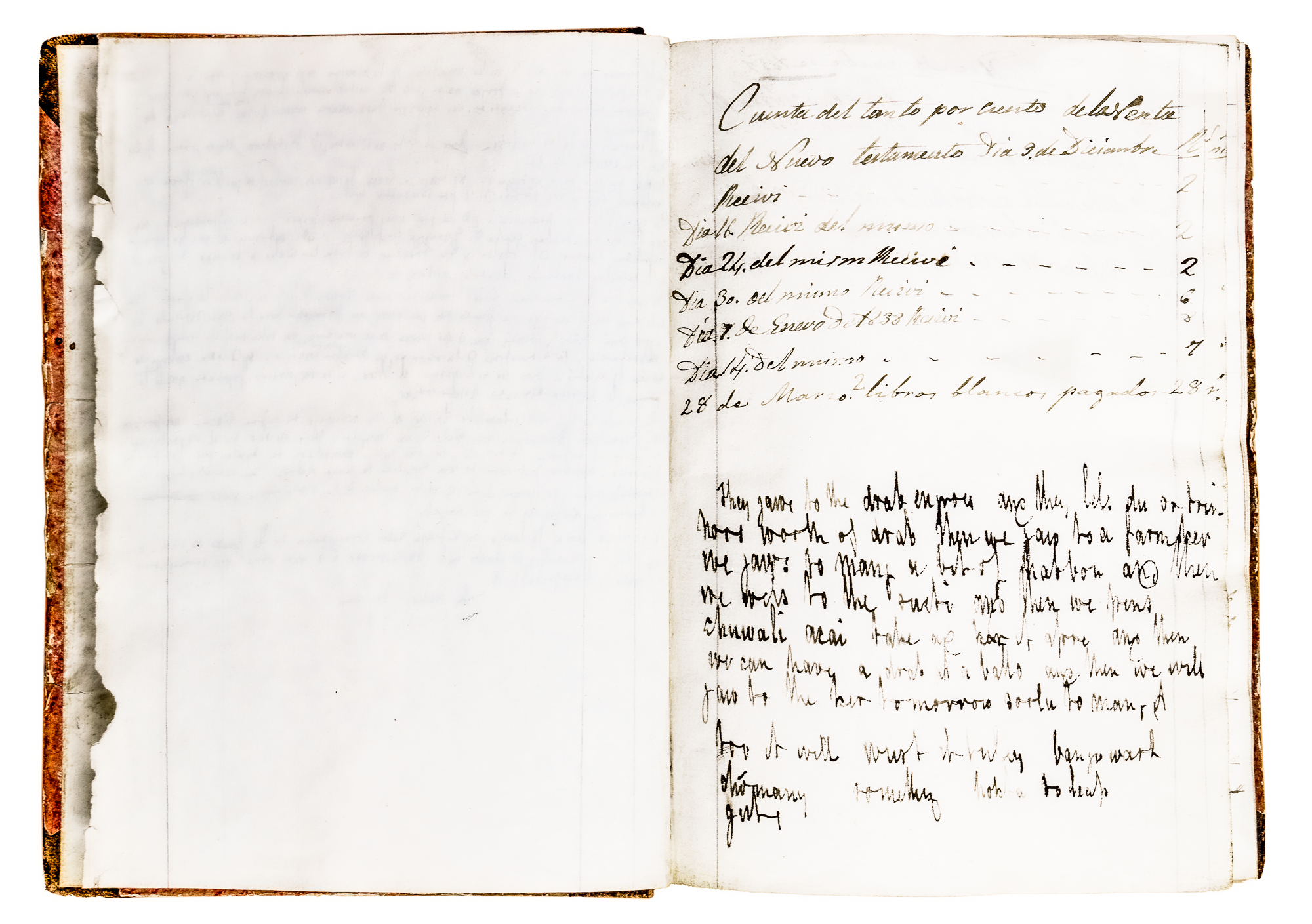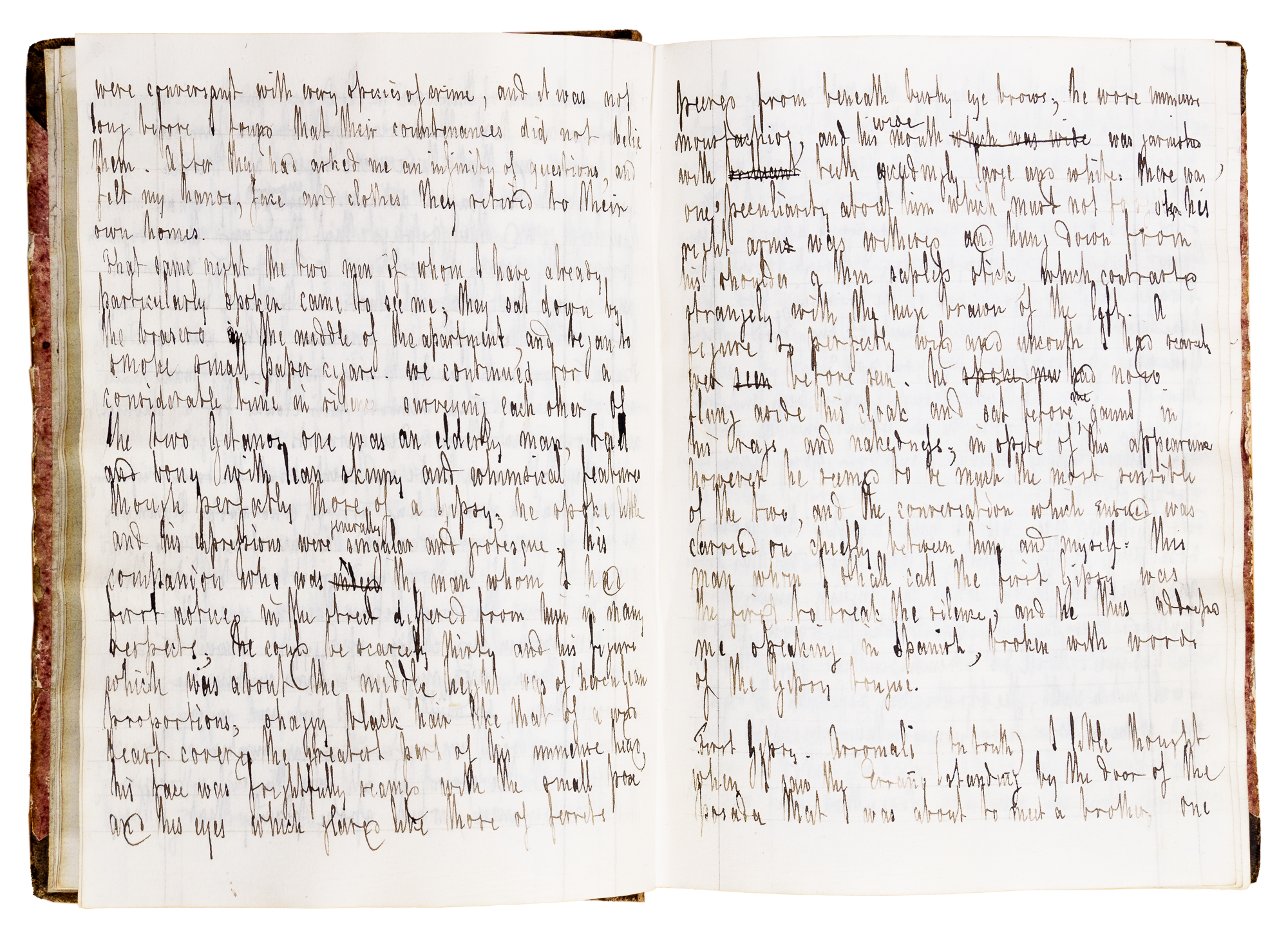On the back of a trip to Russia (1833-35) on behalf of the British and Foreign Bible Society, George Borrow was sent on to Portugal and Spain by the Society in 1835, initially to determine the potential for sale and distribution of a vernacular translation of Bible texts. Despite a civil war (the First Carlist War 1833-40) and Catholic Church opposition, Borrow reported back favourably; but rather than import bibles, it was decided to be more economical to print a new Protestant edition in Spain.
Borrow accordingly oversaw publication in 1837 of a Spanish-language New Testament, using an existing Spanish translation from the Latin Vulgate by Felipe Scio de San Miguel, but without the interpretive notes required by Catholic bibles of the time.
Using his own remarkable linguistic ability, and with the assistance of various Gypsies he befriended in Spain, Borrow also produced his own translation of the Gospel of Luke into Gitano (nowadays called Caló), the Spanish gypsy language. He persuaded the Bible Society to fund its publication in 1838, as Embéo e Majaró Lucas (sometimes referred to as ‘the Gypsy Luke’). It was the first book ever published in Caló, and sold well.
In a corrupt war-torn Spain, Borrow was granted semi-official permission to distribute both biblical texts as long as it was done unobtrusively. He was supported in this by the British ambassador Sir George Villiers, who helped extricate him from a brief arrest and imprisonment; but Borrow’s increasingly conspicuous methods eventually saw mere ownership of both publications prohibited and Borrow forced out of the country in 1839.
As part of his translation of Luke, Borrow had compiled a 200-word glossary of Caló, which he had hoped to include as an appendix in Embéo e Majaró Lucas, but the Bible Society forbade this addition. He determined instead to publish it separately with a few introductory remarks on gypsy history, but these soon outgrew the glossary. The amassed material was published by John Murray in 1841 as The Zincali, or, An Account of the Gypsies of Spain. Borrow was very sympathetic to the gypsies, discussing the discrimination against them, but also did not shy away from the less attractive sides of their culture and character.
Two years later, John Murray published Borrow’s bestseller, The Bible in Spain, an account of his three years in Iberia and Tangiers on behalf of the Bible Society, written after his return to England, and based in part on the letters and reports he sent back to his employer. The first draft was ready in late 1841 but was expanded by 50% after suggestions for improvement from the publisher’s reader, Henry Milton. A second, enlarged, draft was completed by Spring 1842, and published in time for Christmas that year. It was an immediate success, running to five editions by the end of 1843, as well as a mass-produced cheap edition. Almost simultaneously, pirated US editions of 10,000 copies or more flooded the North American market. Despite the dully religious-sounding title, it is a keenly observed and fascinating travelogue, by a wilful Englishman abroad, of a war-ravaged, conservative and superstitious Spain, well off the route of the typical ‘Grand Tour’. Borrow’s interactions with people of all ethnicities and classes was socially radical for his time. He himself does not appear in the most favourable light, especially to the eyes of a modern reader, but this only makes the book the more interesting, and it remains his most read and readable book today.


